AWS Certified Developer - Associate
AWS Fundamentals
What is AWS
In this lesson, we explore cloud computing and AWS, explaining what AWS is, its benefits, and the challenges it addresses. We compare traditional data center deployments with the flexibility and efficiency offered by AWS, making it easier to understand why cloud computing is revolutionizing IT infrastructure.
Traditional IT Infrastructure Challenges
Before cloud computing, deploying an application meant facing significant logistical and financial hurdles. You either had to build a full-scale data center—which is expensive—or rent space in an existing one. Once the data center was secured, procuring and installing physical servers required selecting hardware with specific requirements such as CPU, memory, and graphics cards. The process involved ordering equipment and waiting for days, weeks, or even months for delivery. After receiving the hardware, an employee had to physically rack the servers and set up power, networking, and security before the application could be deployed.
At first glance, a deployed application might seem operational. However, managing physical infrastructure is an ongoing challenge. Hardware can fail, cooling systems may malfunction, and a larger team is necessary to resolve these issues. Additionally, as application traffic increases, scaling becomes cumbersome. Ordering more servers and manually integrating them delays response to sudden spikes and causes inefficiencies.

Scaling a traditional environment means ordering new servers, handling long delivery times, and dealing with underutilized resources when traffic decreases—leading to unnecessary costs.
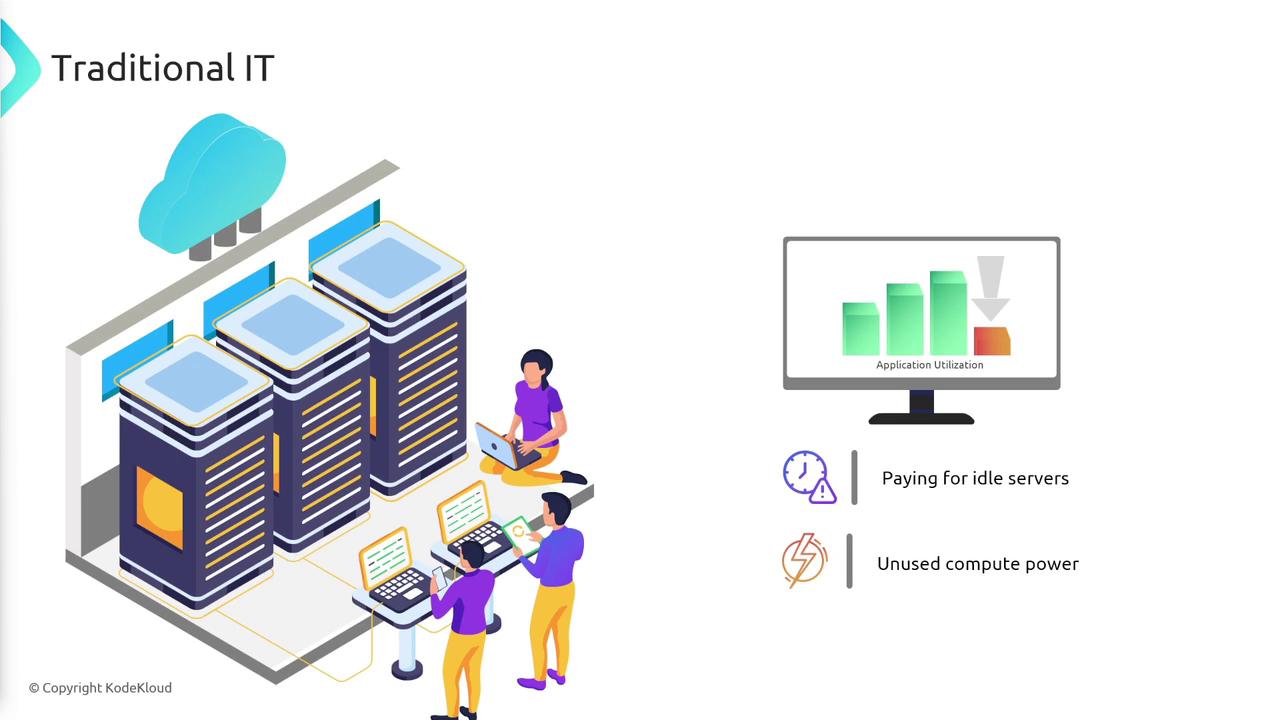
Expanding into multiple geographic regions further increases complexity, requiring additional data center spaces, server orders, local setups, and remote logistics. Clearly, traditional IT infrastructure is burdened with high costs, long provisioning times, and inflexibility.
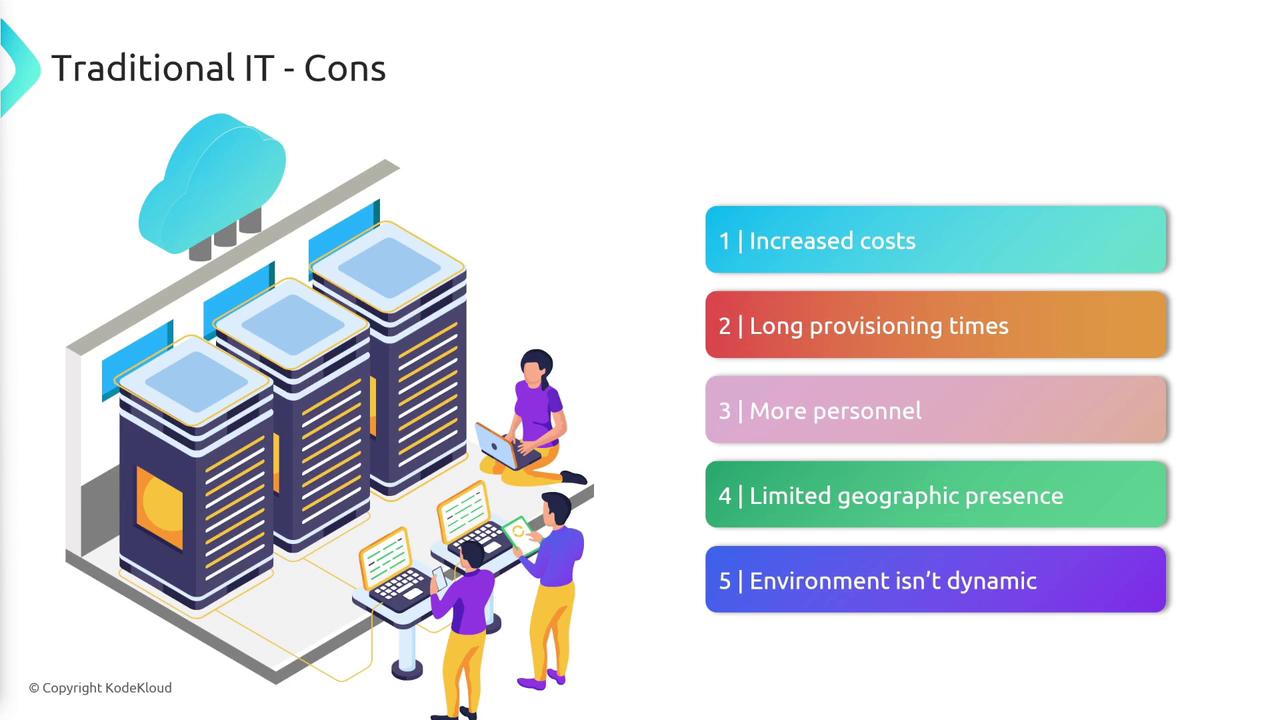
Note
Cloud computing eliminates many of these challenges by eliminating the need for manual hardware management.
AWS: Simplifying IT Infrastructure
Cloud computing—and AWS in particular—simplifies the IT infrastructure by leveraging a global network of data centers. With AWS, you can quickly spin up servers, deploy databases, and provision other services without handling underlying hardware issues. AWS takes over security, networking, and maintenance, allowing you to concentrate on your application.
AWS operates on a simple client-server model. As a user, you send a request to AWS via the AWS Console, CLI, or SDK, specifying your desired resources (for example, one CPU and two gigabytes of RAM). AWS dynamically provisions a server in seconds or less than a minute, then provides you with complete details, such as the IP address.
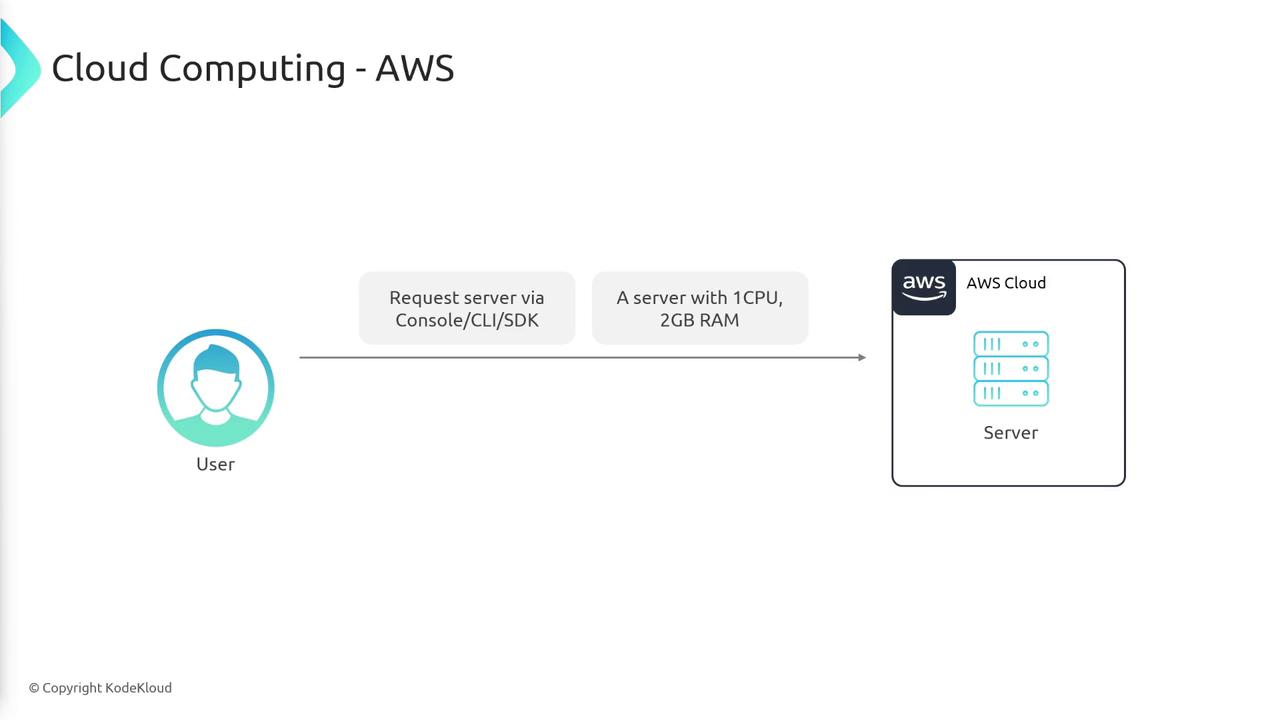
When the server is no longer needed, you can simply send an API request to terminate it. AWS confirms the deletion, ensuring that you only pay for the operational time. This pay-as-you-go model avoids the expense of idle resources that burden traditional infrastructures.
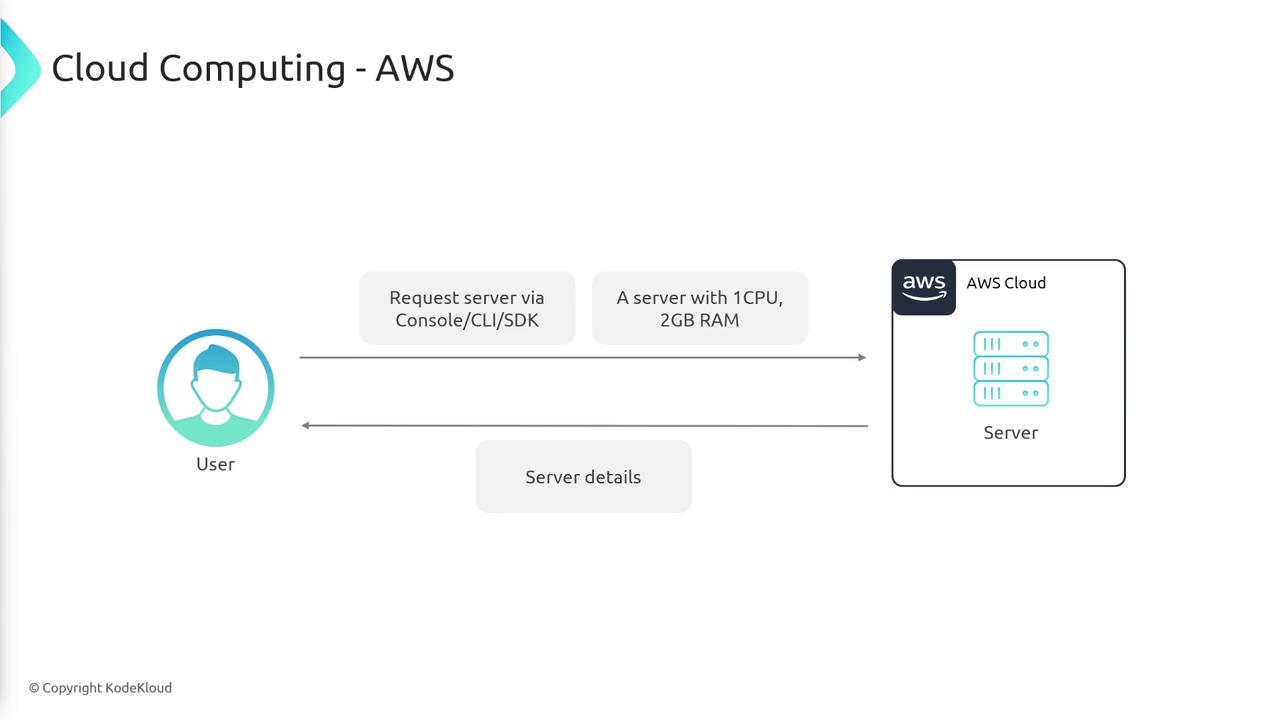
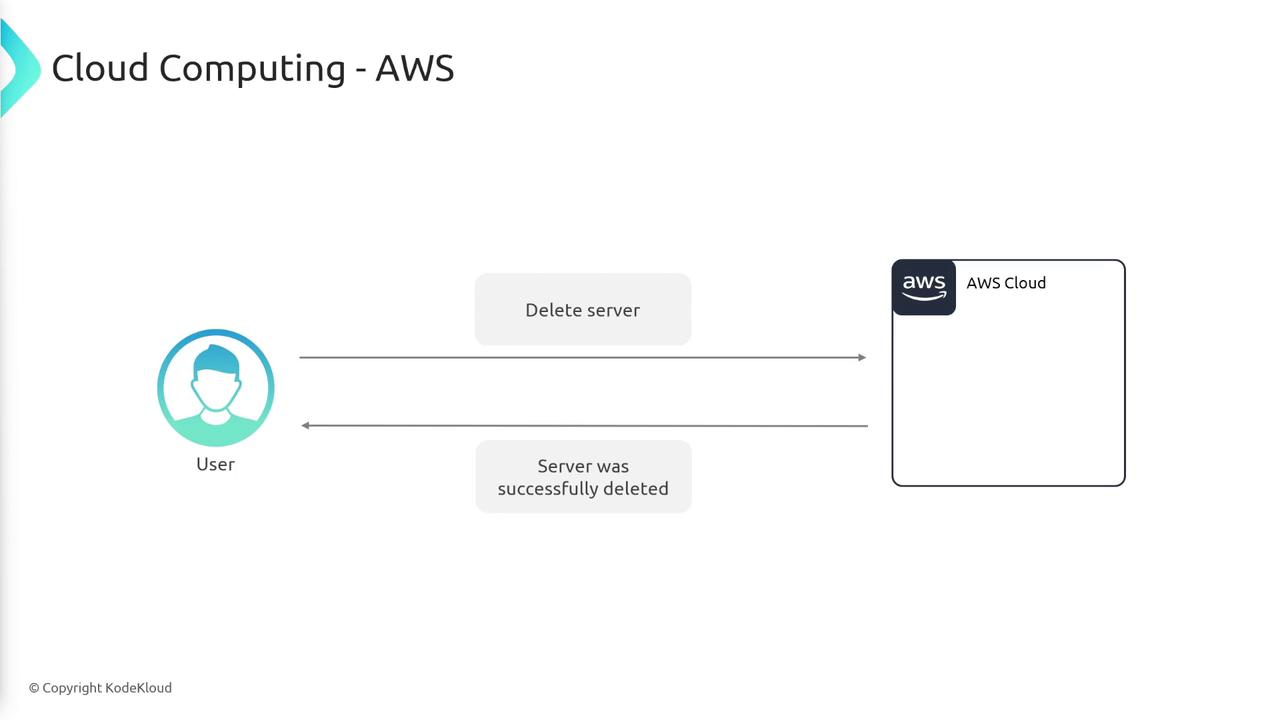
Leveraging AWS Services
AWS offers a wide array of services designed to handle specific functions—ranging from compute power to storage and managed databases. Think of it like ordering a pizza. Instead of gathering ingredients and baking it yourself, you simply visit a restaurant where experts prepare and serve the pizza. Similarly, AWS handles complex tasks such as computing, data storage, and database management for you.
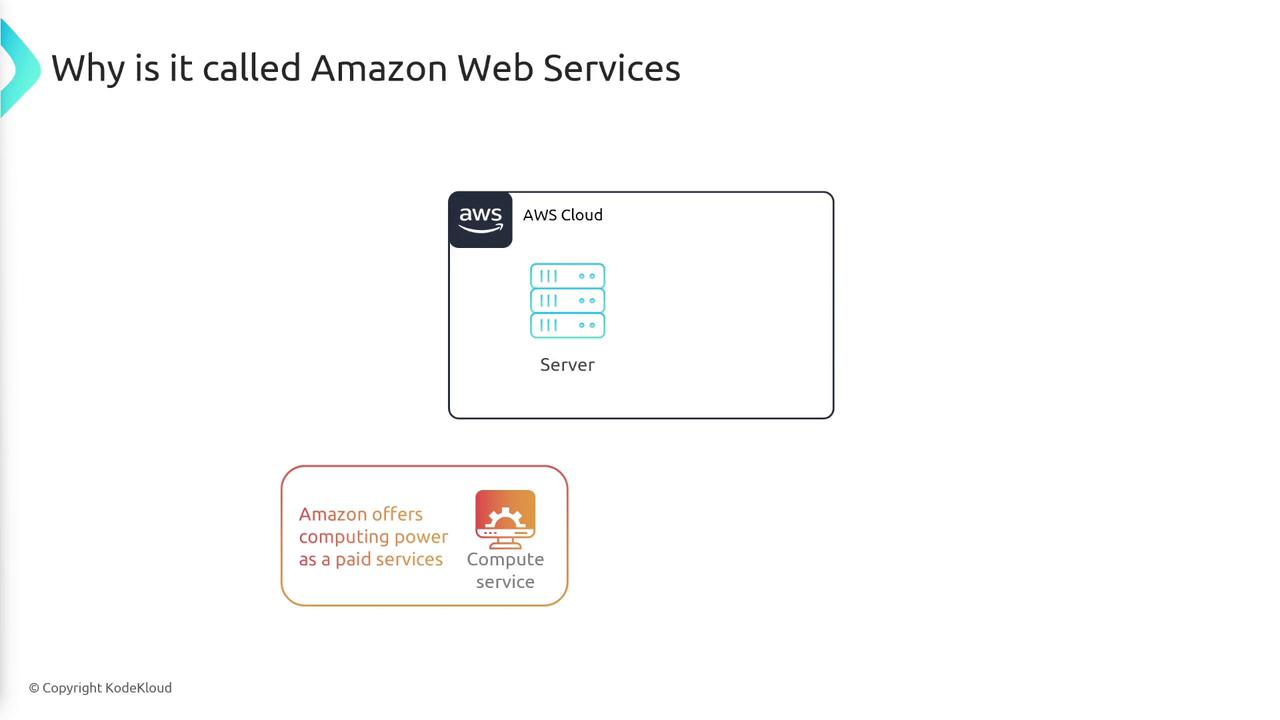
Consider deploying an application that requires a database. In a traditional setup, you would need to manage hardware, install and configure the database software, set up backups, ensure high availability with failovers, and apply security patches—often relying on a dedicated database administrator. AWS simplifies this by offering managed database services. For example, when you request a MySQL database, AWS takes care of the setup, high availability, backup scheduling, and security configurations, then provides you with the connection details to integrate with your application.
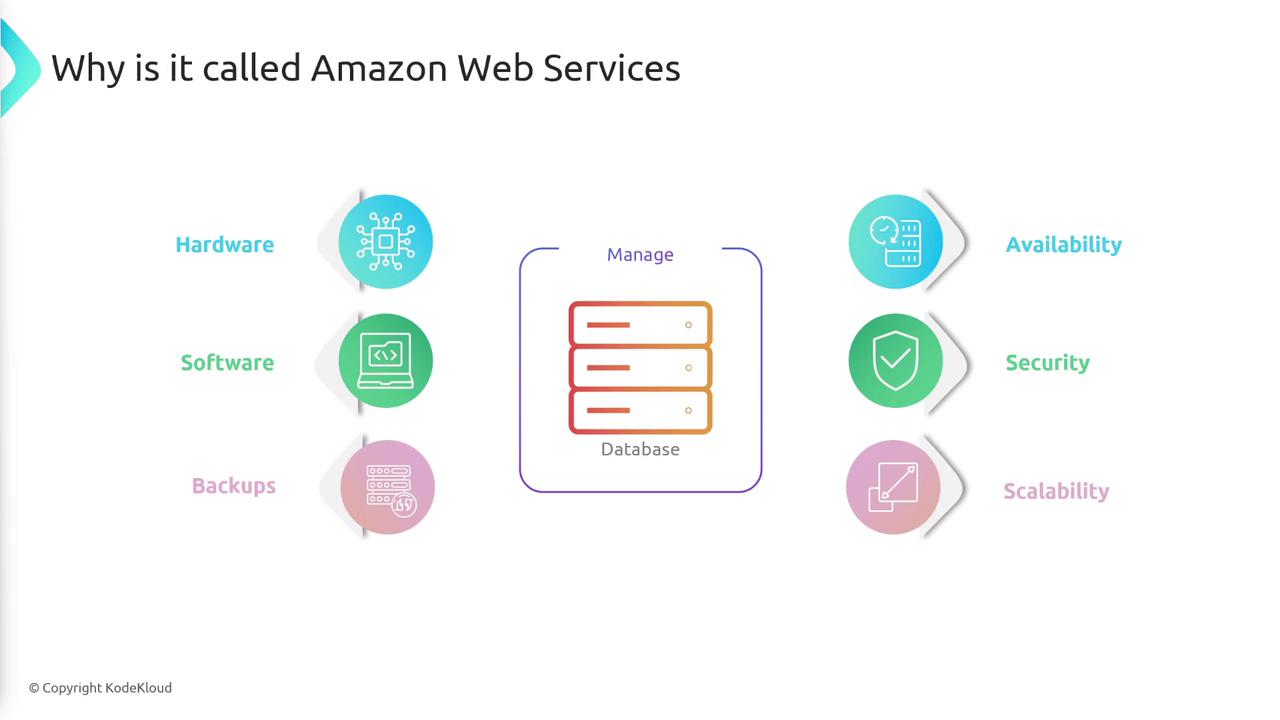
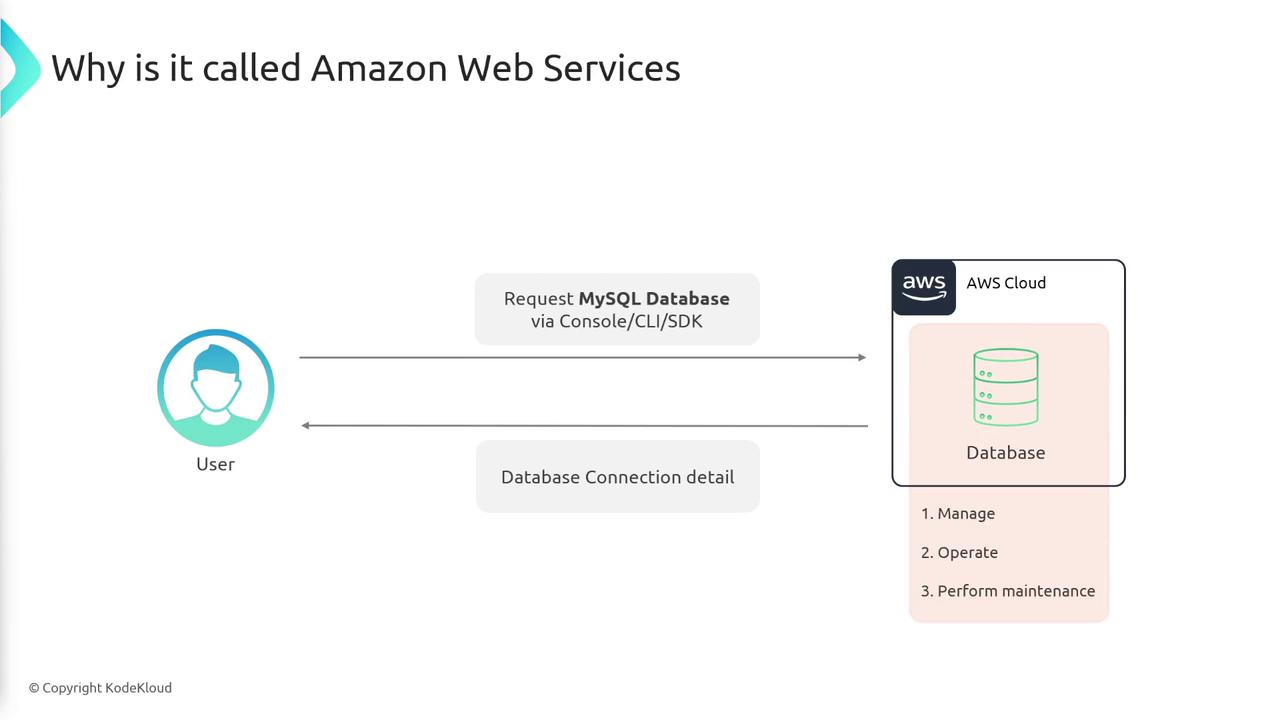
Simply put, AWS lets you focus on what matters most—developing your application—while it handles the complex tasks of provisioning, maintaining, and scaling IT resources. Whether it’s compute power, storage, or database services, AWS offers hundreds of fully featured services designed to simplify modern IT operations.
Summary
Cloud computing provides on-demand delivery of IT resources, including computing power, networking, and storage. AWS’s client-server model allows you to provision resources quickly and pay only for what you use. This on-demand, pay-as-you-go approach—combined with an extensive range of specialized services—makes AWS a highly efficient and flexible platform for deploying and managing modern applications.

Watch Video
Watch video content